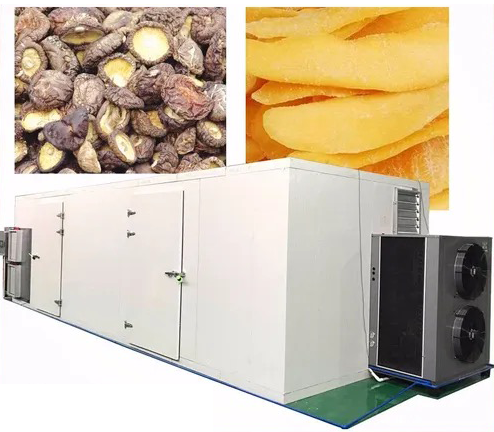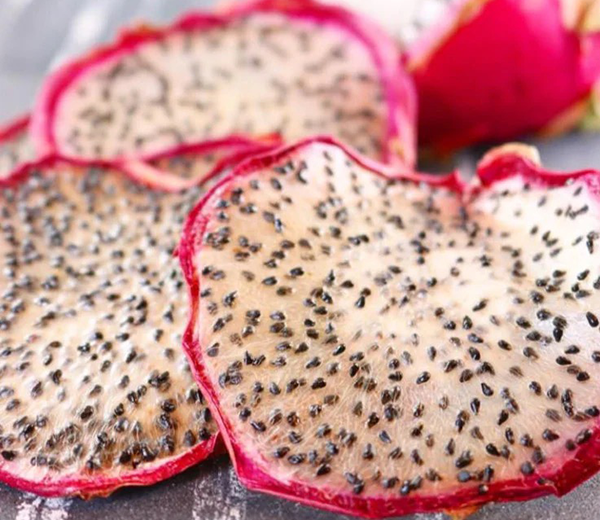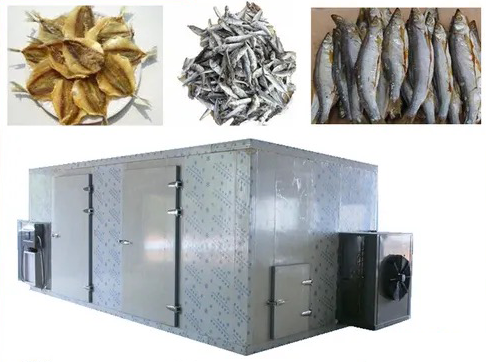
Content Menu
● Understanding Heat Pump Dryers
>> How Heat Pump Dryers Work
● Advantages of Heat Pump Dryers
● Applications in Food Processing
● Components of a Heat Pump Dryer
● Operational Process of Food Drying
● Detailed Insights into Heat Pump Technology
>> Energy Efficiency Explained
>> Temperature Control Mechanisms
>> Moisture Monitoring Systems
● Case Studies in Food Processing
>> Dried Fruits Production
>> Vegetable Dehydration
● Future Trends in Heat Pump Drying Technology
● Conclusion
● FAQ
>> 1. What types of foods can be dried using heat pump dryers?
>> 2. How long does it take to dry food using a heat pump dryer?
>> 3. Are heat pump dryers environmentally friendly?
>> 4. Can I use a heat pump dryer for home use?
>> 5. How do I maintain my heat pump dryer?
● Citations:
In the realm of food preservation, drying is one of the oldest and most effective methods. Among the various technologies available, heat pump dryers have gained popularity due to their efficiency and ability to maintain the nutritional quality of food. This article will explore how heat pump dryers work, their advantages, and their applications in the food industry.

Understanding Heat Pump Dryers
Heat pump dryers utilize a sophisticated system that extracts moisture from food without the need for high temperatures. This is particularly beneficial for preserving the color, flavor, and nutrients of food products.
How Heat Pump Dryers Work
1. Heat Absorption: The process begins with the heat pump absorbing low-temperature heat from the surrounding air.
2. Heat Compression: This absorbed heat is then compressed by a compressor, which raises its temperature significantly.
3. Heating the Air: The heated air is circulated through a drying chamber where it comes into contact with the food items placed on trays.
4. Moisture Extraction: As the warm air passes over the food, it absorbs moisture. The humid air is then directed to an evaporator where it cools down, causing the moisture to condense into water.
5. Water Removal: The condensed water is collected and either drained away or stored in a reservoir for later disposal.
6. Recirculation: The cooled air is reheated and recirculated back into the drying chamber, continuing the drying process until the desired moisture content is achieved.
This cycle allows for efficient moisture removal while using significantly less energy compared to traditional drying methods.
Advantages of Heat Pump Dryers
Heat pump dryers offer several benefits that make them an attractive option for food processing:
- Energy Efficiency: They consume about 30-50% less energy than conventional dryers due to their ability to recycle heat.
- Low Temperature Operation: The drying process occurs at lower temperatures (typically between 20°C to 80°C), which helps preserve sensitive nutrients and flavors in food.
- Versatility: Suitable for a wide range of products including fruits, vegetables, meats, and herbs.
- Environmentally Friendly: By using ambient air as a heat source and minimizing energy consumption, they have a lower environmental impact.
- Quality Preservation: Foods dried using heat pump technology retain their original color, shape, and nutritional content better than those dried at higher temperatures.
Applications in Food Processing
Heat pump dryers are used across various sectors within the food industry:
- Fruits and Vegetables: Ideal for drying apples, mangoes, tomatoes, and other produce without losing their vibrant colors and flavors.
- Meats: Used for making jerky or dehydrated meats while maintaining texture and taste.
- Herbs and Spices: Effective in preserving essential oils and flavors found in herbs like basil or thyme.
- Seafood: Commonly used for drying fish and shellfish while ensuring safety and quality.
Components of a Heat Pump Dryer
A typical heat pump dryer consists of several key components:
- Heat Pump Unit: This includes the compressor, evaporator, condenser, and expansion valve that work together to circulate refrigerant.
- Drying Chamber: A well-insulated space where food is placed on trays for drying.
- Fans: Used to circulate air within the drying chamber for even moisture removal.
- Control System: Allows operators to set temperature and humidity levels according to specific drying needs.

Operational Process of Food Drying
The operational steps involved in using a heat pump dryer include:
1. Preparation of Food Items:
- Select high-quality ingredients.
- Clean thoroughly to remove any contaminants.
- Cut into uniform sizes to ensure even drying.
2. Loading into Trays:
- Arrange food items evenly on trays with enough space for air circulation.
3. Setting Parameters:
- Adjust temperature settings based on the type of food being dried (typically between 40°C to 65°C).
4. Monitoring Drying Process:
- Regularly check moisture levels until desired dryness is achieved (usually takes several hours).
5. Storage of Dried Products:
- Package in airtight containers or vacuum-seal to prevent moisture absorption from the air post-drying.
Detailed Insights into Heat Pump Technology
Energy Efficiency Explained
The energy efficiency of heat pump dryers stems from their unique design that allows them to transfer heat rather than generate it. By capturing ambient heat from the environment, these systems can operate at lower energy costs while providing effective drying capabilities. This not only reduces operational costs but also contributes positively to sustainability efforts within the food processing industry.
Temperature Control Mechanisms
One of the standout features of heat pump dryers is their precise temperature control mechanisms. Operators can set specific temperature ranges tailored to different types of foods. For instance:
- Fruits may require lower temperatures (around 40°C) to preserve their natural sugars.
- Vegetables often benefit from slightly higher temperatures (up to 60°C) to ensure thorough drying without compromising quality.
This flexibility allows manufacturers to optimize their processes based on product requirements, leading to better end results.
Moisture Monitoring Systems
Modern heat pump dryers come equipped with advanced moisture monitoring systems that provide real-time feedback on humidity levels within the drying chamber. This technology enables operators to make immediate adjustments as needed, ensuring consistent product quality throughout each batch.
Case Studies in Food Processing
Dried Fruits Production
A notable example of heat pump dryer application can be seen in dried fruits production facilities. Companies have reported significant improvements in product quality when switching from conventional dryers to heat pump systems. For instance:
- A facility producing dried apples noted that using a heat pump dryer resulted in a 20% increase in color retention compared to traditional methods.
- Additionally, they experienced reduced energy costs by approximately 40%, allowing them to reinvest savings into other areas of production.
Vegetable Dehydration
Another case study involves vegetable dehydration processes where companies have successfully implemented heat pump technology:
- One company specializing in dehydrated vegetables found that their products retained more vitamins and minerals when dried using heat pumps compared to high-temperature methods.
- They also noted an increase in customer satisfaction due to improved taste profiles resulting from better preservation techniques.
Future Trends in Heat Pump Drying Technology
As technology continues to evolve, so too does the potential for advancements in heat pump dryer systems:
- Integration with IoT Technology: Future models may incorporate Internet of Things (IoT) capabilities that allow remote monitoring and control via smartphones or computers.
- Improved Energy Sources: Innovations may lead to even more efficient energy sources such as solar-assisted heat pumps that further reduce operational costs while promoting sustainability.
- Enhanced Automation Features: With advancements in automation technology, future heat pump dryers could feature more sophisticated control systems that automatically adjust parameters based on real-time data analysis.
Conclusion
Heat pump dryers represent a significant advancement in food preservation technology. Their ability to efficiently remove moisture while maintaining quality makes them ideal for various applications in the food industry. As demand for high-quality dried foods continues to rise, investing in this technology can provide manufacturers with a competitive edge by ensuring superior product quality with reduced energy costs.

FAQ
1. What types of foods can be dried using heat pump dryers?
Heat pump dryers can effectively dry fruits, vegetables, meats, seafood, herbs, and spices while preserving their nutritional value and flavor.
2. How long does it take to dry food using a heat pump dryer?
The drying time varies depending on the type of food and its initial moisture content but typically ranges from 4 to 8 hours for most products.
3. Are heat pump dryers environmentally friendly?
Yes, they are more energy-efficient than traditional dryers and utilize ambient air as a heat source, reducing overall environmental impact.
4. Can I use a heat pump dryer for home use?
While primarily used in commercial settings, smaller models are available for home use that can effectively dry fruits and vegetables.
5. How do I maintain my heat pump dryer?
Regular maintenance includes cleaning filters, checking refrigerant levels, and ensuring that all components are functioning properly to maintain efficiency.
Citations:
[1] https://www.bxdrymachine.com/food-drying-machine.html
[2] https://www.familyhandyman.com/article/heat-pump-dryer/
[3] http://www.ijstr.org/final-print/jan2021/Conventional-And-Advanced-Food-drying-Technology-A-Current-Review.pdf
[4] https://www.youtube.com/watch?v=DeN-h6opueM
[5] https://www.alamy.com/stock-photo/food-dehydrator.html
[6] https://industrialdryers.com/food-dryers/
[7] https://www.choice.com.au/home-and-living/laundry-and-cleaning/dryers/articles/what-is-a-heat-pump-dryer
[8] https://www.fox-foodprocessinginabox.eu/drying-technologies/
[9] https://www.youtube.com/watch?v=S-hDpODzIV0
[10] https://www.dreamstime.com/photos-images/food-dehydrator.html











